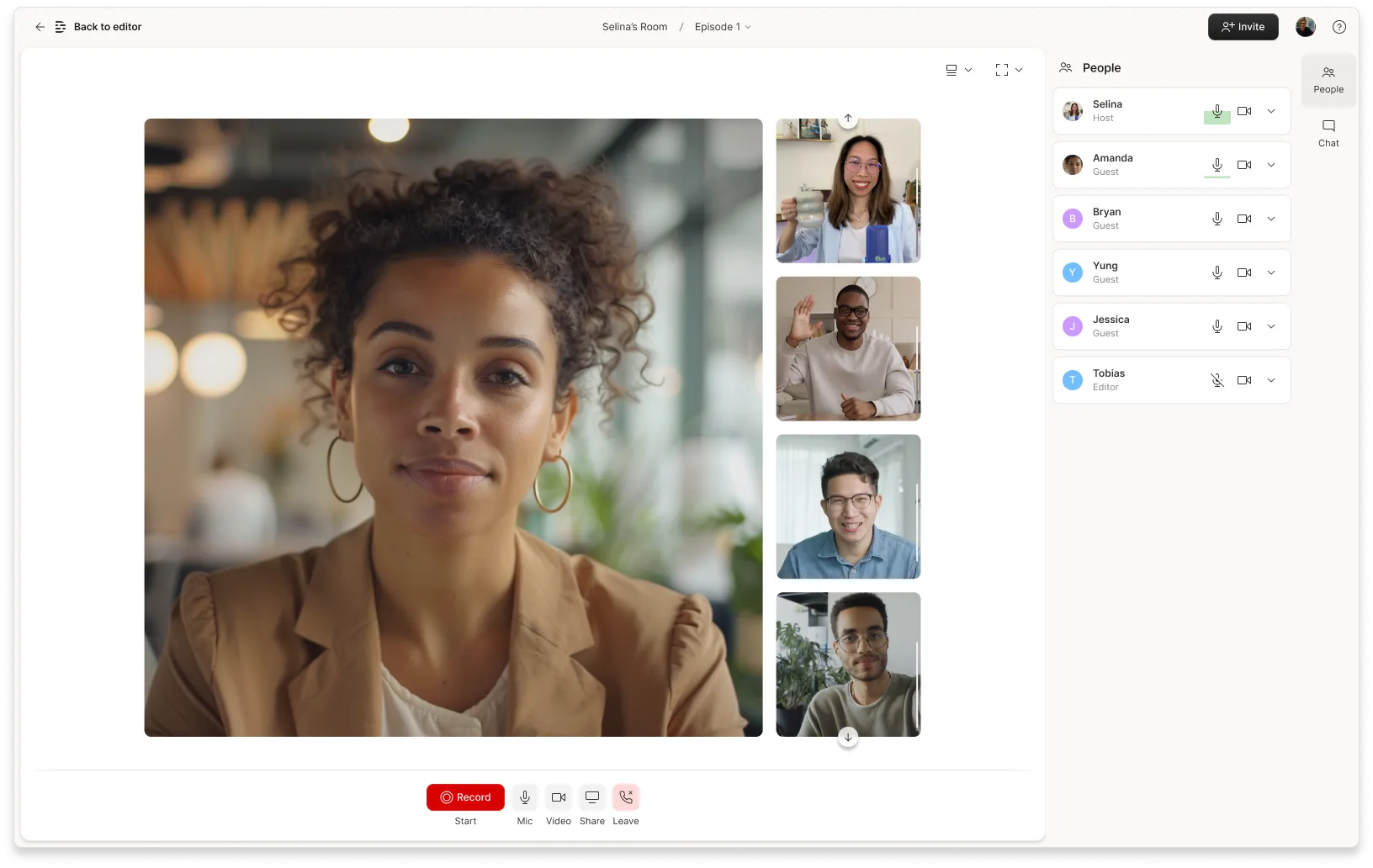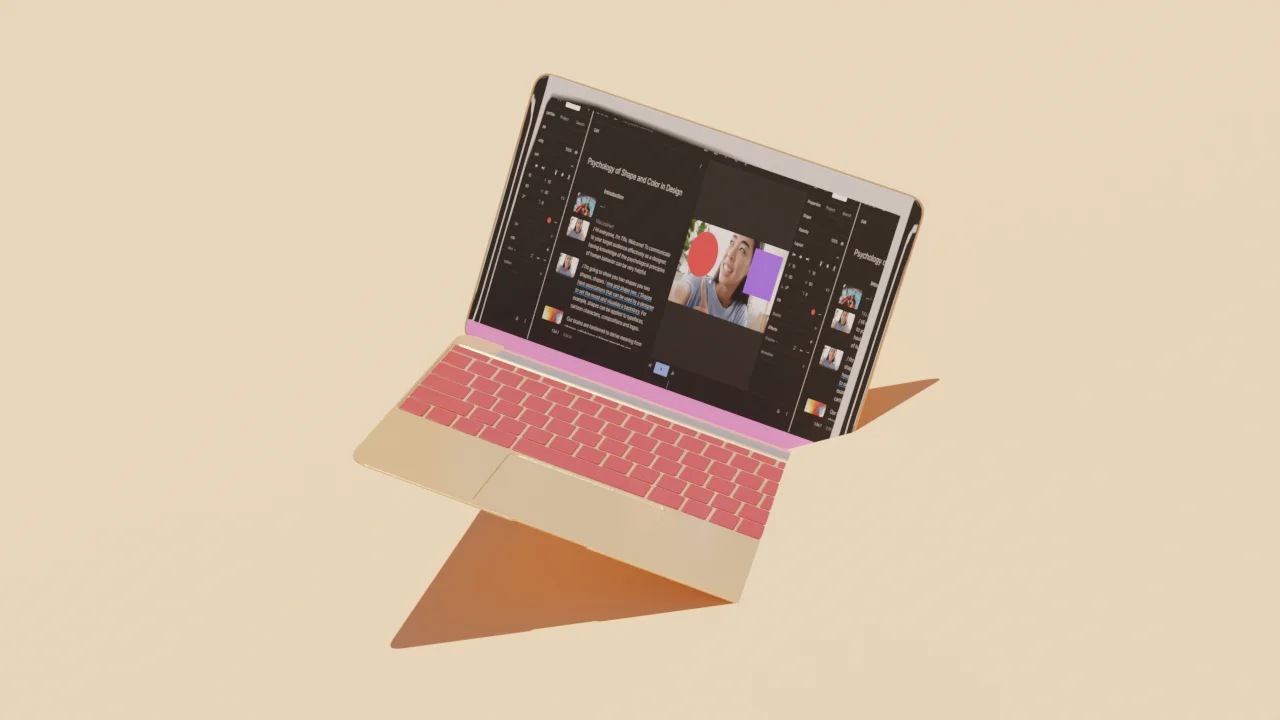What type of content do you primarily create?




The most compelling video interviews feel authentic: the guest is speaking from the heart, and their body language and non-verbal cues communicate the sense that they’re relaxed and in their element.
That doesn’t happen by accident. To get that kind of calm and conversational interview, you need to be armed with the knowledge and tools to create a calm and conversational atmosphere for your interviewee.
Let me walk you through my five top tips for performing a compelling in-person interview that’ll have your audience locked into your content.
Tip 1: If possible, use multiple cameras
That old saying, “Two heads are better than one” couldn’t be more true for video interviews. Using two or more cameras will offer you a multitude of advantages, both creative and logistic, that will elevate your interview to new heights.
Two cameras — one wide, one close-up — allows for a more engaging visual experience, capturing the interviewee in their environment, their body language, and their close-up expressions. You’ll be able to more effectively convey your message with maximum impact by switching between the two camera angles at appropriate moments when editing the video.
Two cameras will also save you a huge headache, diminishing the likeliness of a disaster by acting as a backup. For example, if one camera runs out of battery, you can seamlessly switch to the other without disrupting the flow of the interview. It also allows you to easily cut out the inevitable “umms” and “arrghs” without needing to re-shoot, or hide the cut with B-roll.

Tip 2: No dodgy camera angles
Okay, you’ve got two cameras. But where to place them? It’s really more about where NOT to place them.
You’ll want to start by figuring out where the interviewee and interviewer are sitting, to establish where your interviewee’s gaze will be resting.
Once you’ve figured that out, you can begin by placing your first camera, wide or close-up (up to you!), to the left or right of the interviewer. Aim for roughly a 30º angle. The interviewer can then keep an eye on this camera during the interview.
Whichever side you’ve chosen for your first camera, place your second camera on the same side, at more of an angle. You can go anywhere from right next to your first camera, to a 90-degree side-on angle. It’s best not to place the second camera on the opposite side of the first. It causes disorientation for the viewer, who’ll likely find themselves unable to concentrate on what’s being said.
As for who watches over that second camera, it’s best to have a friend or assistant check for battery life, memory, and that your interviewee hasn’t shifted out of focus. But you can also do this yourself between questions. That’s the beauty of two cameras, if there’s a problem with one, you’ve always got a backup!
Tip 3: Off-camera for natural results
You have two options for where your interviewee should be looking: directly into the camera, or slightly off-camera, towards the person interviewing them. Off-camera will produce a more natural interview, and the reason is very human — when we’re asked questions, we seek eye contact and approval.
But replace eye contact with a camera lens, and your interviewee will probably shift into performance mode, turning inward and letting anxiety take center stage. Without intention, most people tense up, shift into odd positions, and lose their train of thought in their heightened state of self-consciousness. By instructing them to ignore the equipment and focus on you — the interviewer, a human — you’ll ensure a more relaxed, authentic interview, full of natural body language and non-verbal cues.

Tip 4: Avoid scripts
It’s tempting to think that as much prep as possible MUST be the answer to a successful video interview. And you’d be mostly right. But the one thing you can definitely let go of is the itch to prepare a script — whether it’s for you or your guest.
Folks can tell a scripted response a mile away. It’s that ever-so-slight hesitation, formal phrasing, and general disconnection that makes the delivery feel artificial. While scripts certainly have a place in advertising and presenting, they don’t usually allow for authenticity, spontaneity, or natural body language to happen, all of which are pretty essential for a persuasive and compelling video interview.
So if your interviewee asks how they can prepare, feel free to give them a loose idea of the questions you want to cover, but advise them not to prepare written answers. You can also tell them that any time they want to start over from the beginning of a question, they can. That usually makes them feel better!
Something like:
“During the interview, we’ll cover x, y and z. But don’t worry about preparing answers. We’ll keep things relaxed and conversational for an authentic feel, and anything you want to repeat, no problem!”
Tip 5: Be armed with questions
There’s a bit of an art to writing great interview questions. On the one hand, it’s about narrowing down the scope to the essentials that you need to know.
For example, say you’re interviewing a staff member for a recruitment video. You might decide the following three questions are where the money’s at:
- What’s your name and role in the company?
- Tell me what you love about your role.
- What’s one piece of advice you have for a prospective hire?
But maybe your interviewee gives you short answers and it’s not quite enough to work with in the editing suite. You can take your questions, and ask them in different ways. Like this:
- What’s your name and role in the company?
- Can you describe your role to me?
- Tell me what you love about your role.
- What’s the thing you look forward to most when you come to work every day?
- How would you describe what it feels like to be doing the thing that you love every day?
- What’s one piece of advice you have for a prospective hire?
- If you were interviewing for a job at your company tomorrow, what would you be preparing?
- Describe what your first day of work was like.
- How did your coworkers make you feel on your first day of work?
…And just keep on going until you're confident you’ve bagged all the gold!
It’s worth bearing in mind that it’s helpful to be flexible — use your question list as a guide, not an itinerary. If your interviewee gives you an answer you weren’t expecting, don’t freeze or panic. Instead, be ready to explore their answer and think of new questions that might elevate your interview in a way you hadn’t anticipated.
Bonus tip: 2 high-tech hacks for eye contact
Don’t get me wrong, I fully support doing an off-camera interview. But if you’re desperate to have your interviewee speak directly to the camera, there is a good solution.
Documentary filmmaker Errol Morris pioneered a technique using a Teleprompter. He called it the Interrotron. Teleprompters usually project a script for hosts to read from, but instead of a script, Morris projected live footage of his own face. This let the interviewee talk to the interviewer and look directly into the camera lens at the same time. The result is a super relaxed, authentic interview, that the audience — through eye contact — feels a part of. It’s a powerful tool for creating intimacy in your film, as demonstrated beautifully here by Trail Films:
It’s possible to make your own Interrotron using a Teleprompter Mirror (also known as a beam splitter mirror), a piece of black cloth and some binder clips. Or, if the thought of making one has you feeling dizzy, you can go ahead and shop for one. There are plenty on the market.
Getting an authentic shot of your guest looking directly into the camera is the best option for intimate eye contact, but barring that, there’s also AI. Descript’s Eye Contact video effect will subtly adjust the subject’s gaze so it appears they’re looking directly into the camera, even when they’re not.





























%201.svg)

















